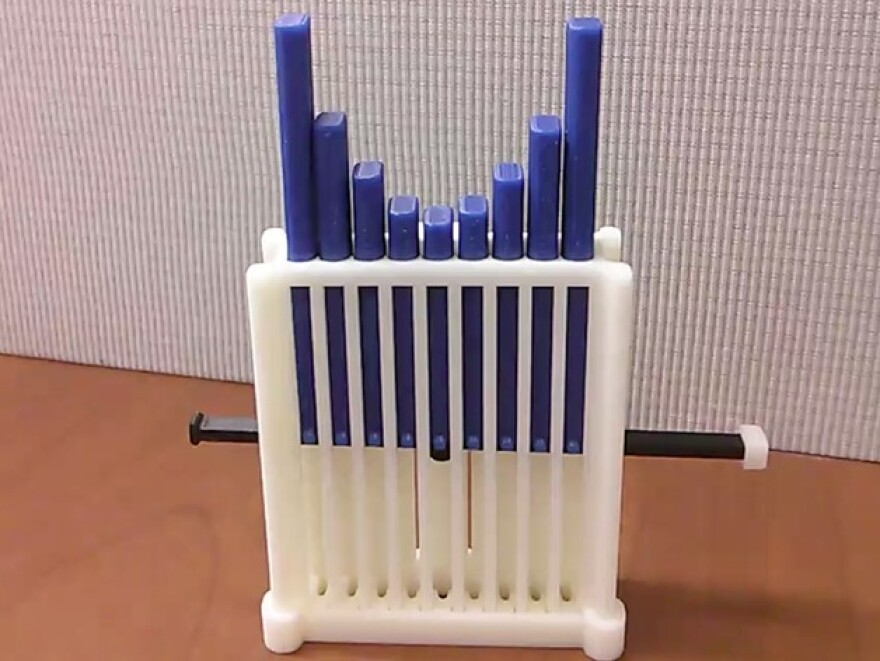Truth matters. Community matters. Your support makes both possible. LAist is one of the few places where news remains independent and free from political and corporate influence. Stand up for truth and for LAist. Make your year-end tax-deductible gift now.
This archival content was originally written for and published on KPCC.org. Keep in mind that links and images may no longer work — and references may be outdated.
Irvine nonprofit using 3D printers as new math teaching tool

Teachers have known for a long time that many kids learn math best if they can play with blocks and other tools they can touch.
Educators call these toys and tools "manipulatives," and while effective in teaching, they can also be expensive.
Now developers at the MIND Research Institute, an educational nonprofit based in Irvine, Calif., are creating ways for teachers to produce the tools with less expense using three-dimensional printers.
"To get manipulatives in the hands of kids in classrooms across America is hard because of the scalability issues, the purchasing issues, all of that," said Ki Karou, a game-based learning designer at the institute. "We’ve seen this actually as a new tool that not just us, but other people, can use to get into the hands of kids."
RELATED: RSVP for KPCC'S upcoming event on 3D printers in the classroom
Karou presented the nonprofit's work last week in Austin, Texas, at SXSWedu, the education technology event that is part of the South by Southwest interactive, music and film conference series.
MIND Research Institute first debuted its 3D printing manipulatives last fall at the University of California, Irvine.
"Kids especially learn best through hands-on experiences," Karou said. "Manipulatives as a class of objects are really a way of taking these abstract symbols and bringing them to life so that kids can get more of a concrete understanding of how the math works."
Karou said one benefit of 3D printing is that it can help bring down costs when something needs replacing. If a teaching tool breaks, a teacher can simply print out a replacement part.
Using 3D printers to help teach math concepts is a very new concept, according to Karou. He said challenges remain in incorporating 3D printer teaching strategies into student curriculum, but he encouraged school districts to experiment, if they have the resources to invest in it.
"The key is you're going to need someone who's really a dedicated staff," he said, "someone that really understands how to use the technology and can explore that and find how to bring it into the curriculum."
At Pasadena Unified schools, students are learning to use computer-aided design software and 3D printers to produce objects for math and art classes. Students have also produced props for the school's play.
Teaching math via 3D printing is just one piece of MIND Research Institute's work. Karou works in a six-person content development team that creates teaching tools based on helping students conceptually understand math. The institute also offers software that uses computer animation to explain math concepts.
In a video on the institute's website, co-founder and CEO Matthew Peterson said many California students can better learn math if they switch from word-based learning to visual learning.
"This simple innovation of removing the language barriers is able to elevate math proficiency everywhere we put it," he said, citing a study by UC Irvine conducted in Orange County schools.
On Sunday, KPCC is hosting an event in its Crawford Family Forum on 3D printing in the classroom. The public can attend the free event by registering here.








